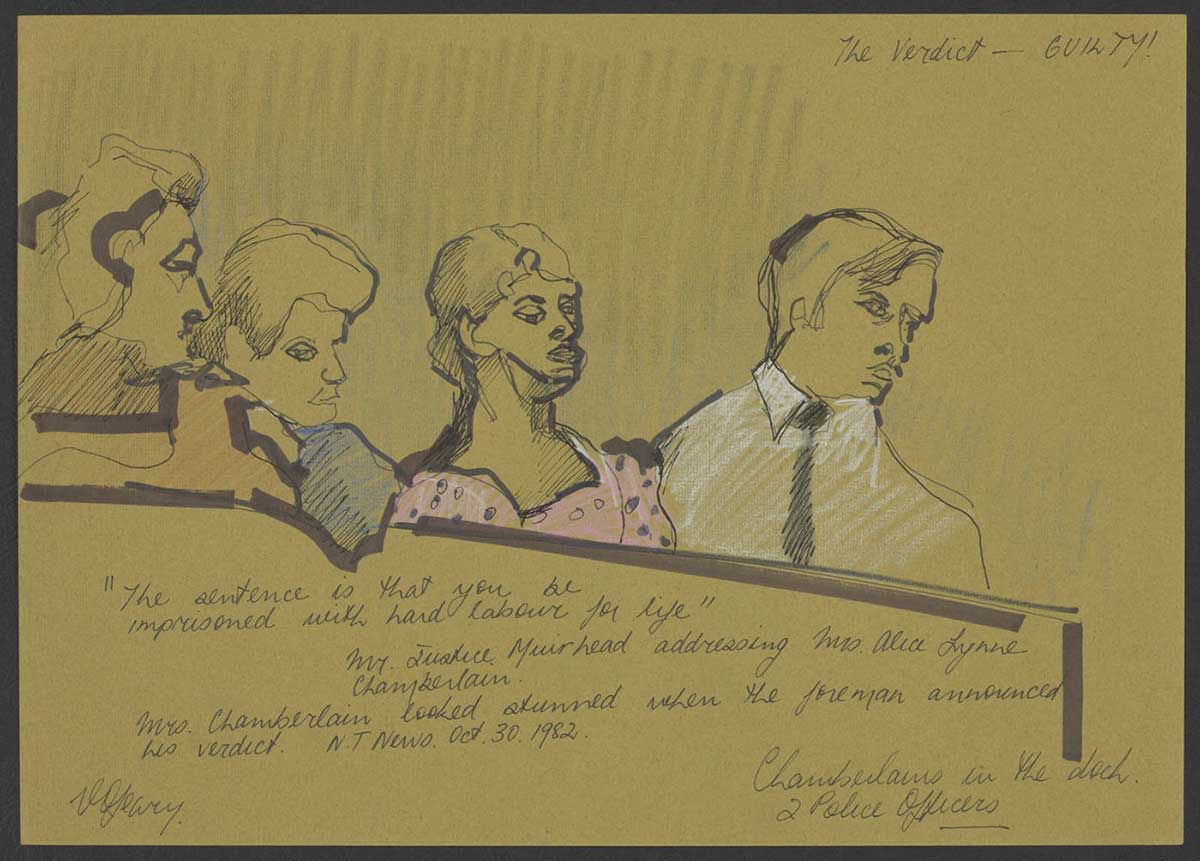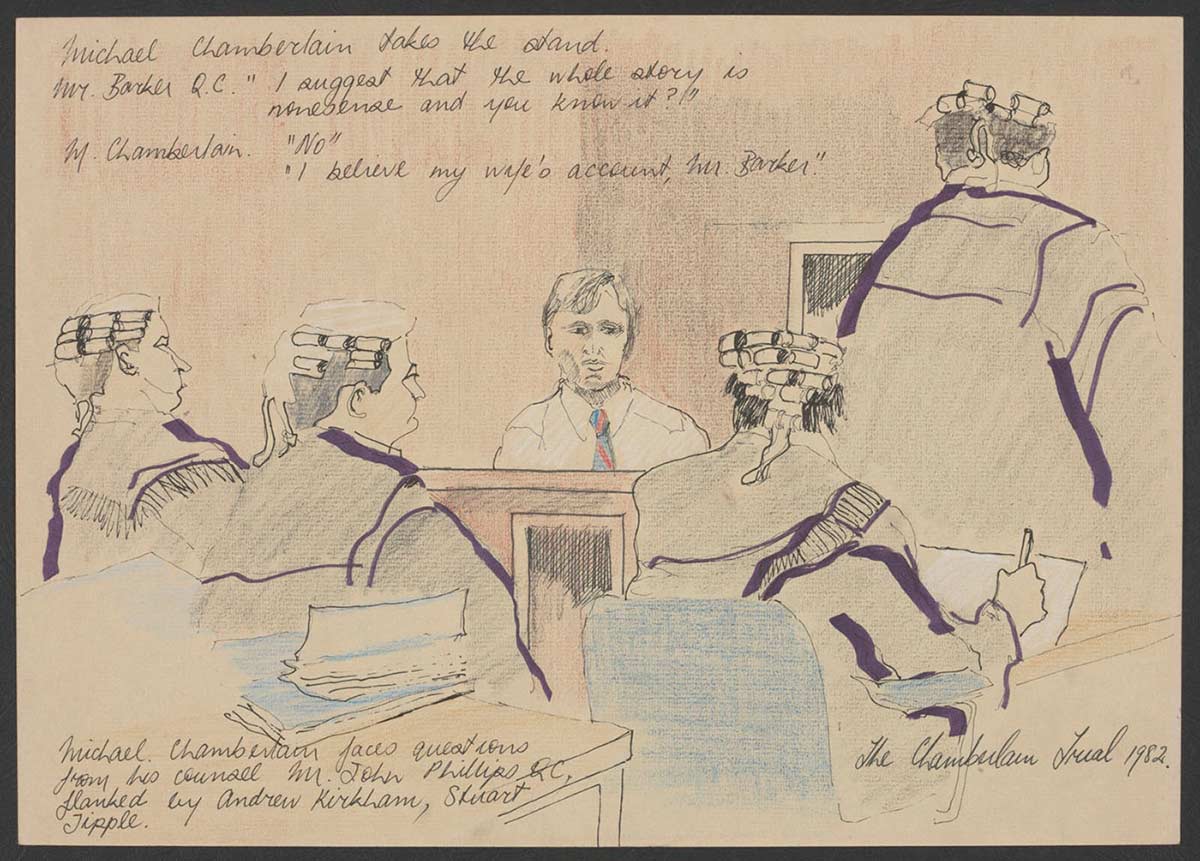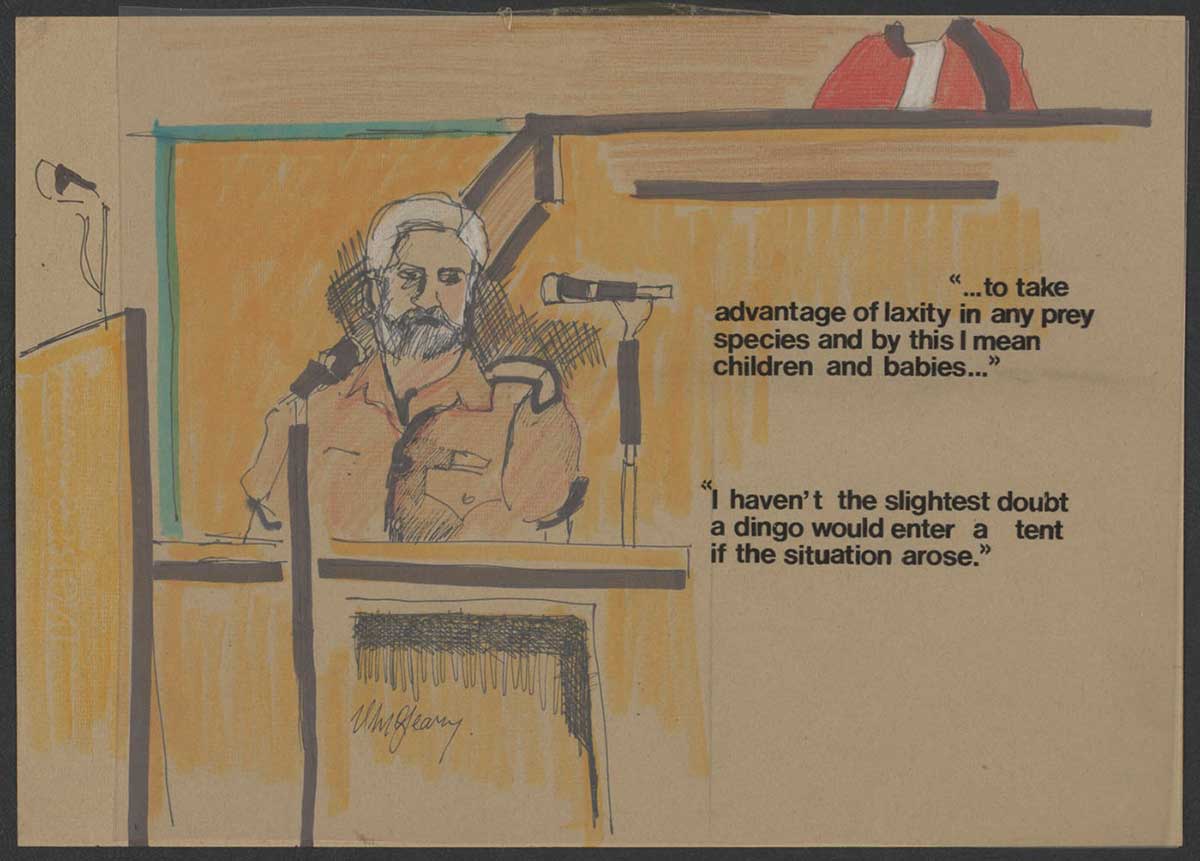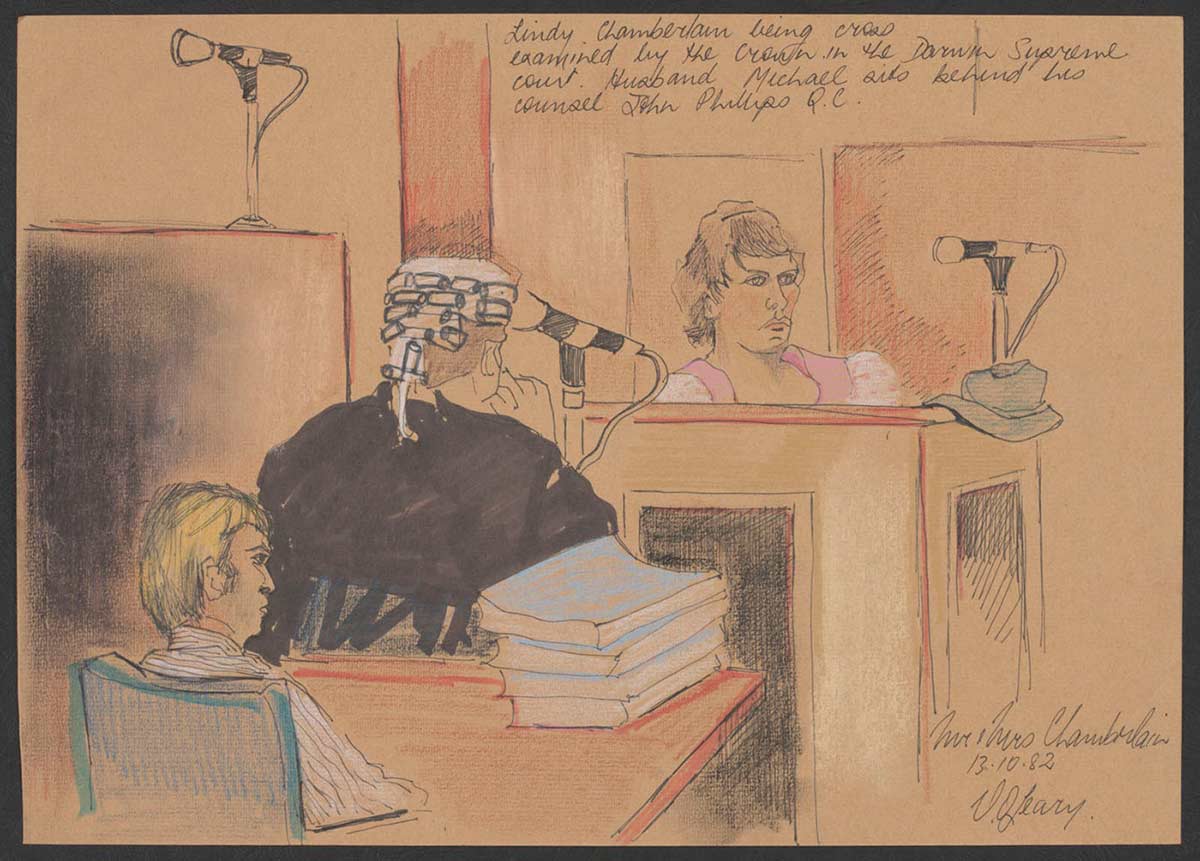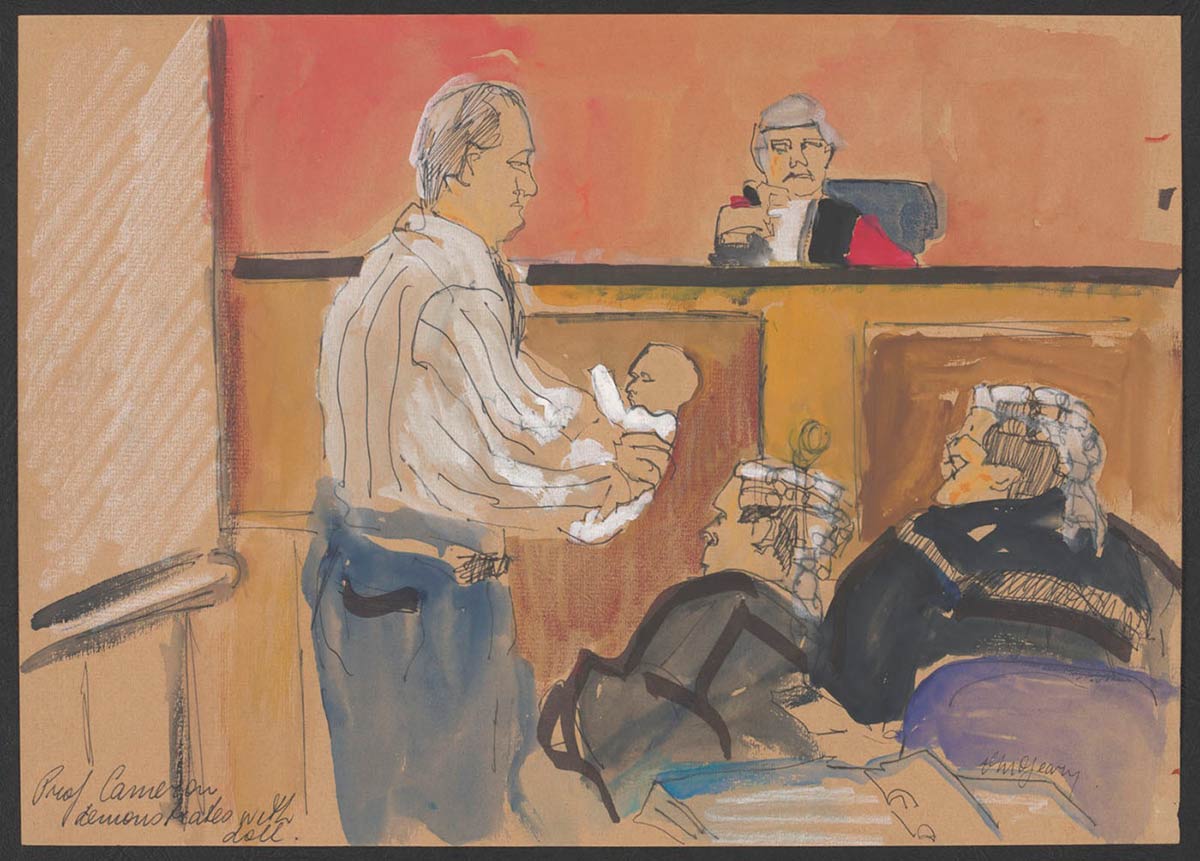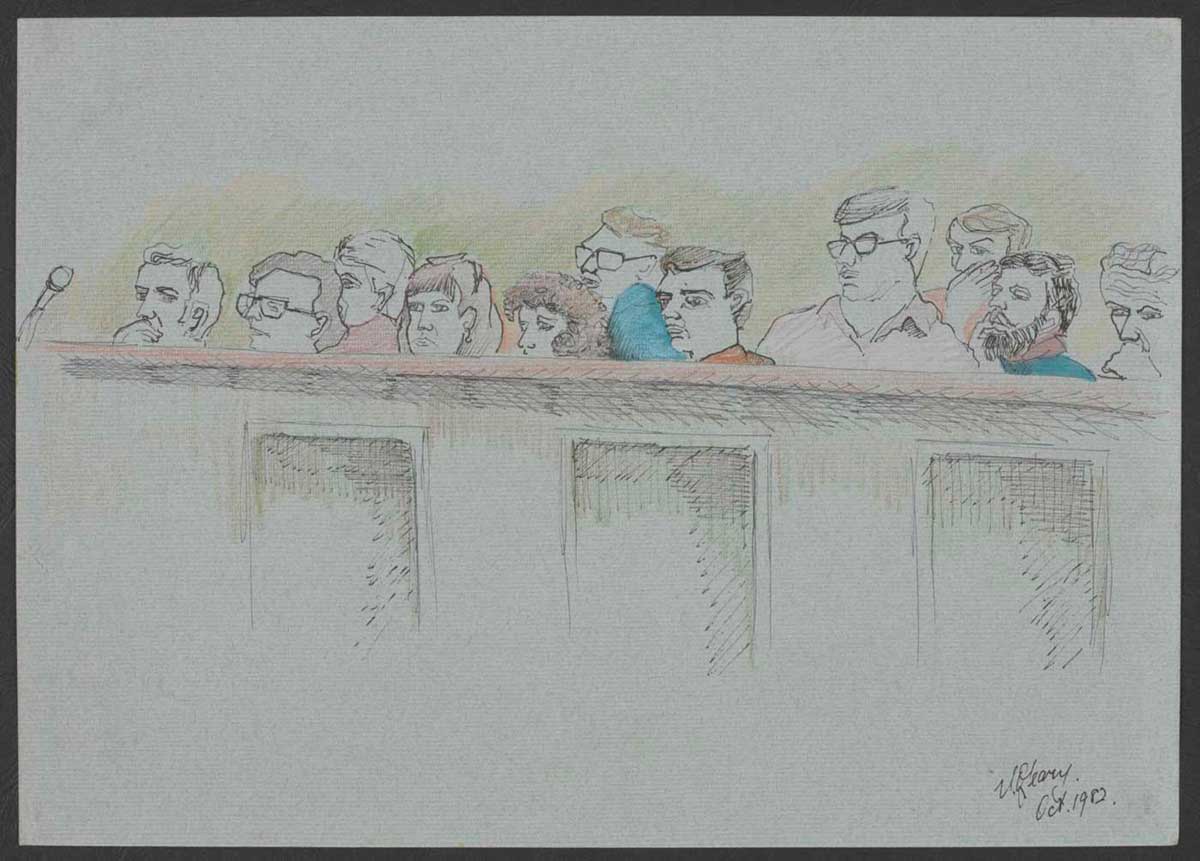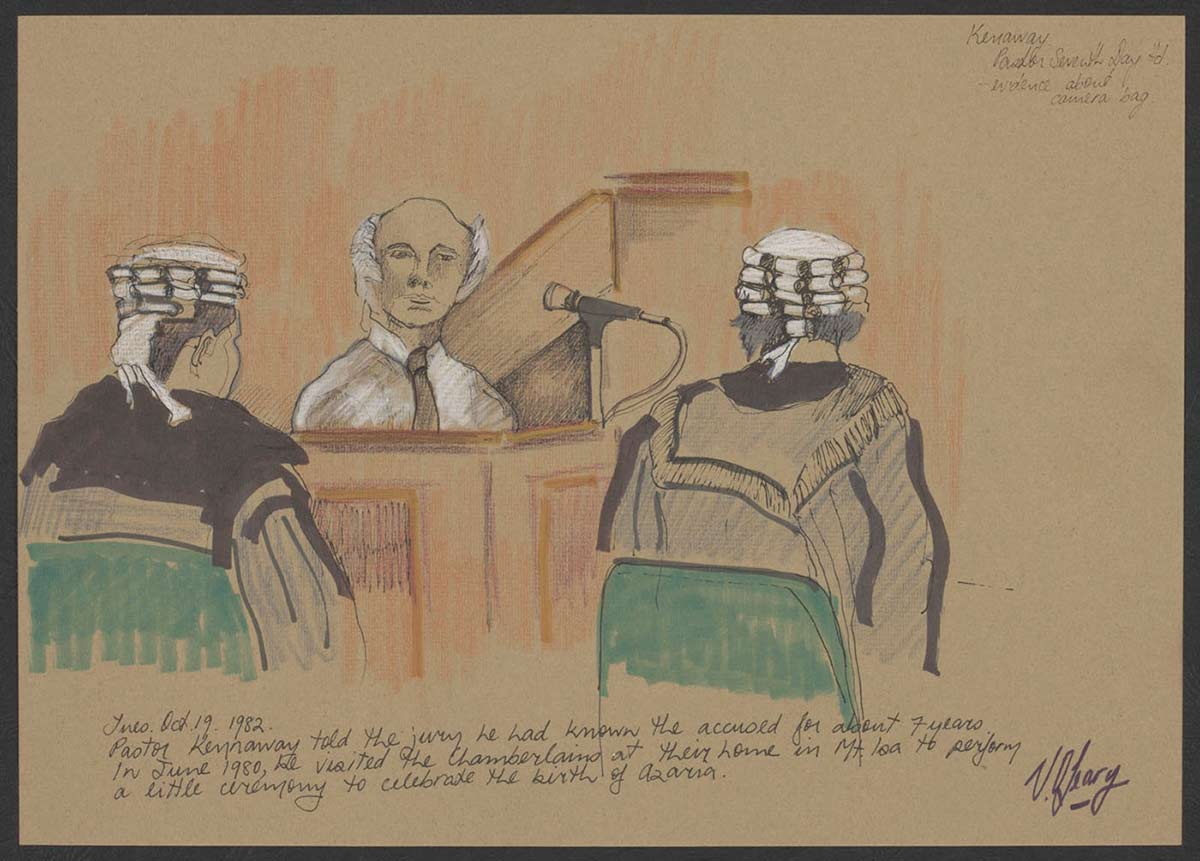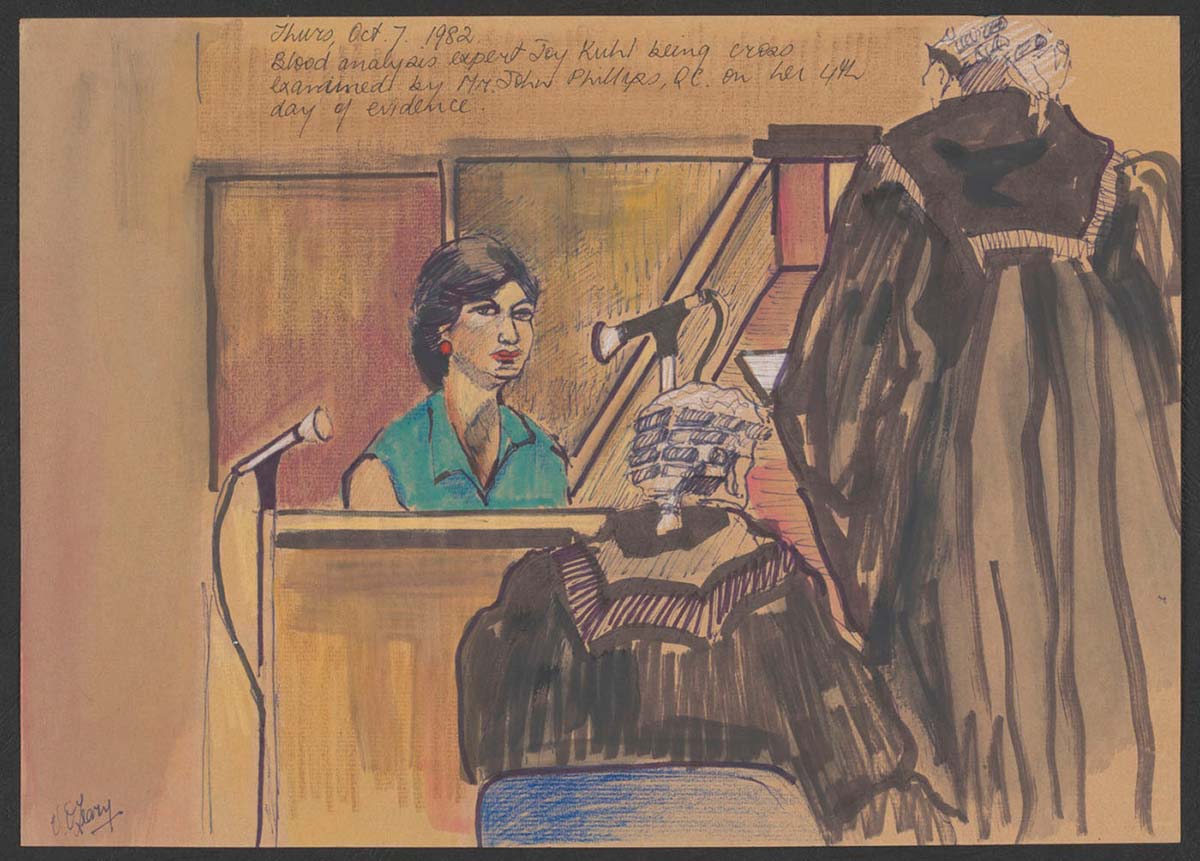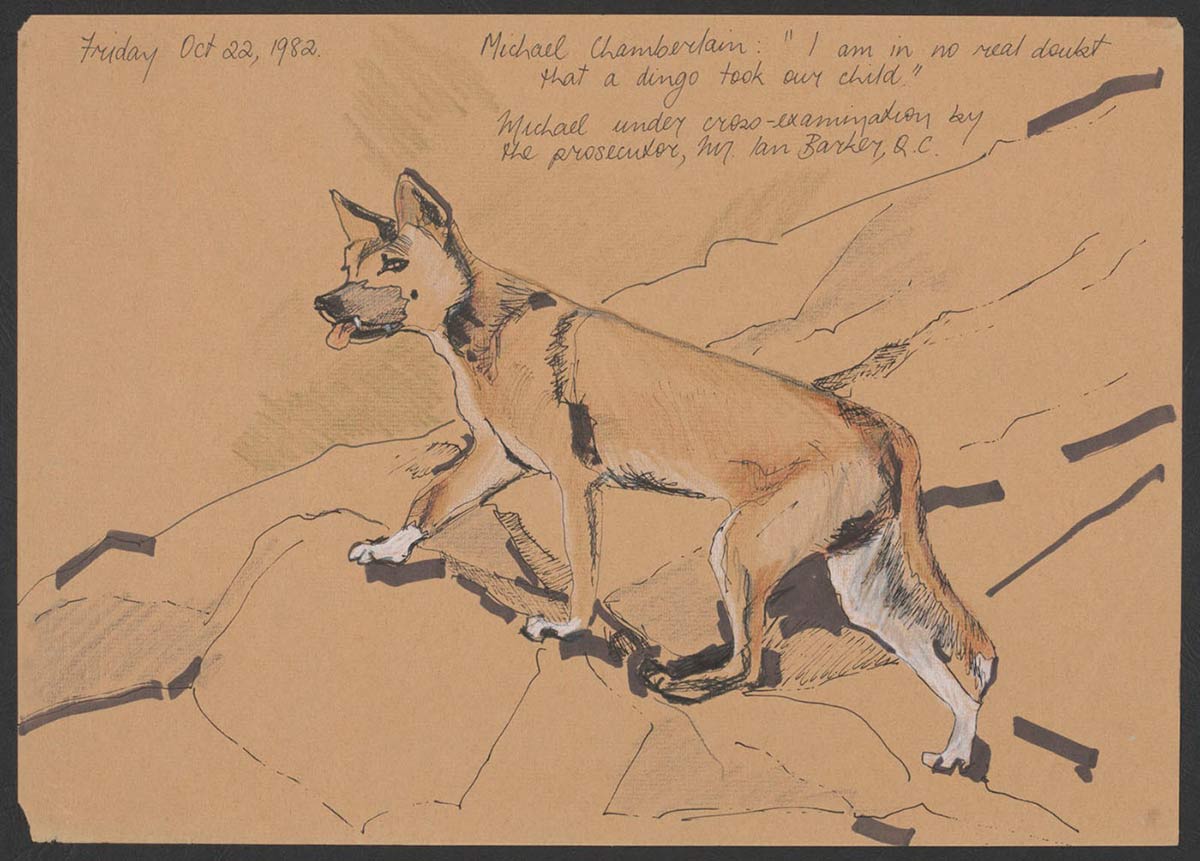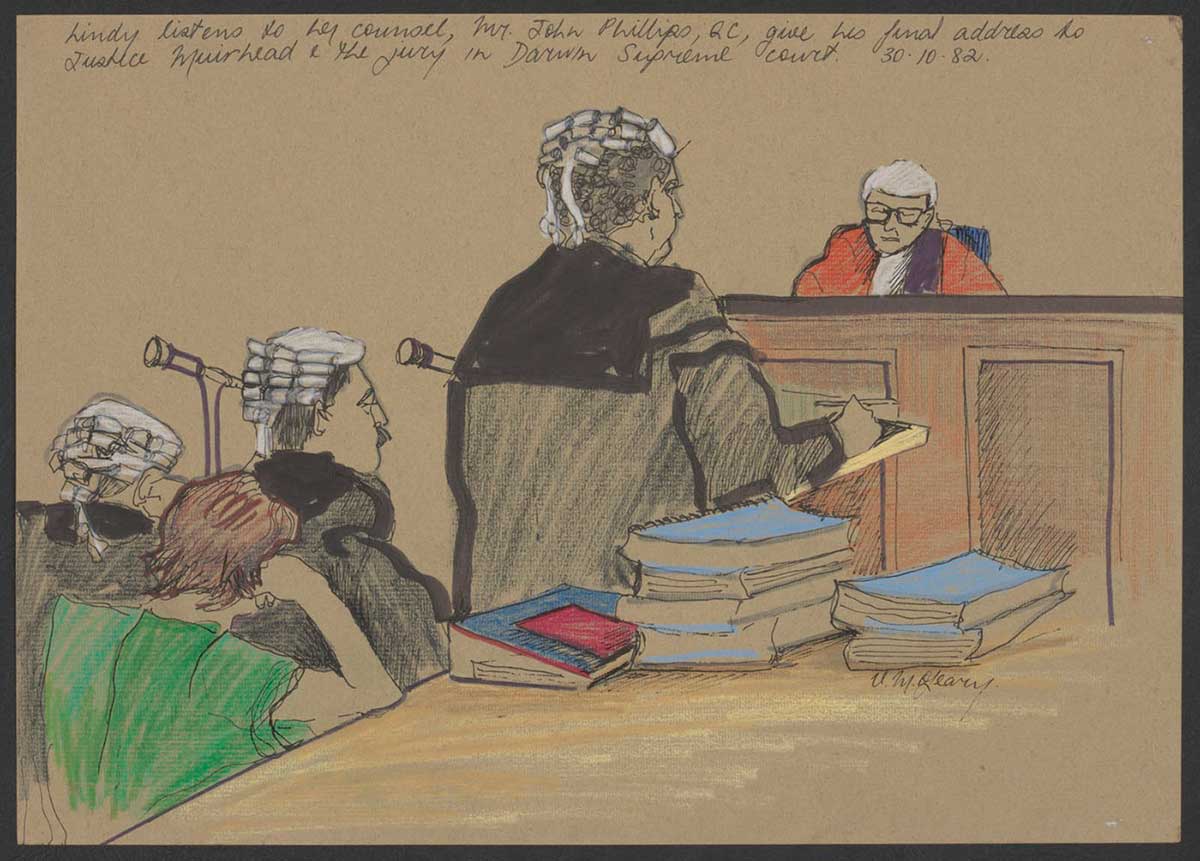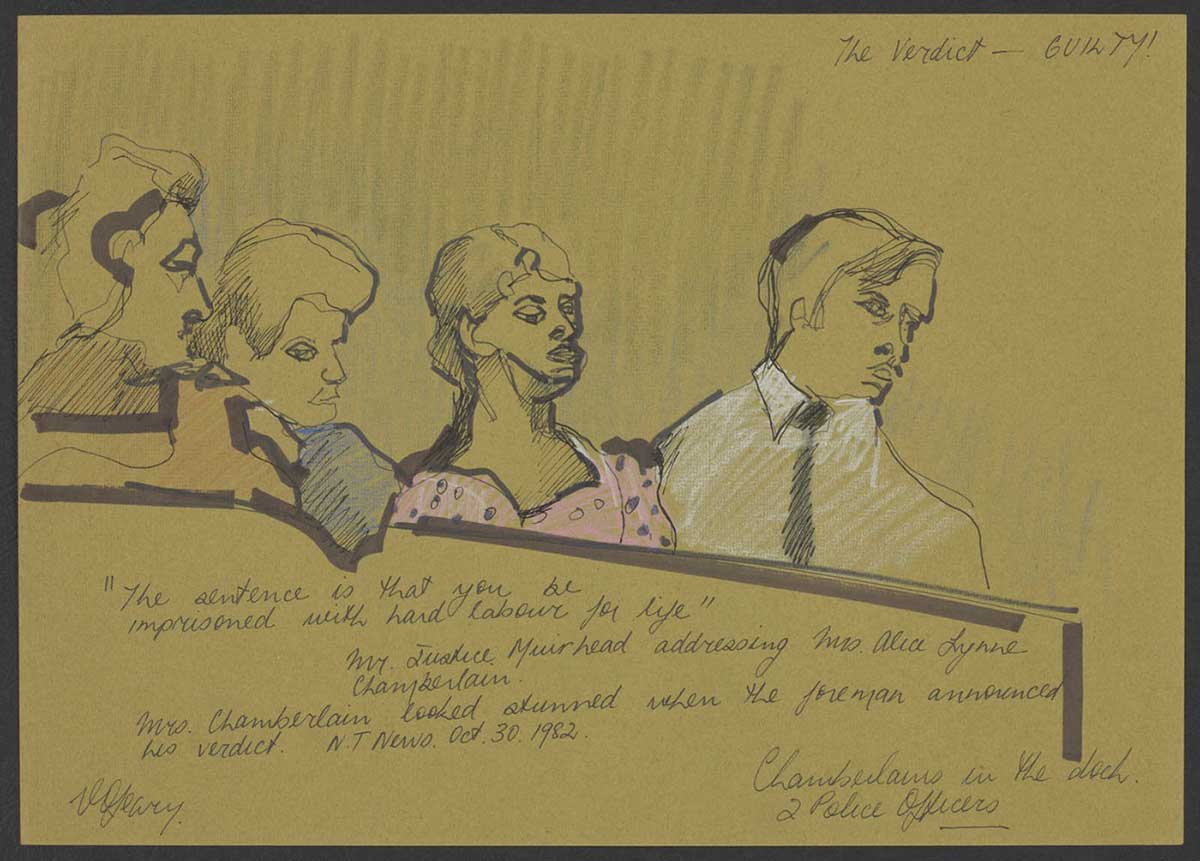The disappearance of baby Azaria Chamberlain from Ayers Rock (now Uluru) on 17 August 1980 is one of the most infamous events in contemporary Australian history.
Courtroom drawings
A complete archive of 182 courtroom drawings from the high-profile 1982 criminal trial of Azaria's parents, Lindy and Michael Chamberlain, was acquired by the National Museum of Australia in 2011.
Veronica O'Leary created the drawings for the Australian Broadcasting Commission, now the Australian Broadcasting Corporation. The ABC used the drawings in its television coverage of the case. O'Leary worked alongside fellow artist Jo Darbyshire, who was also employed as a courtroom artist by the ABC.
The drawings feature the key figures and moments from the trial, which resulted in Lindy Chamberlain being convicted of murder and imprisoned for more than three years. Eventually, mounting evidence forced a royal commission that resulted in the exoneration of Lindy and Michael Chamberlain by the Supreme Court of the Northern Territory.
Chamberlain trial drawings slideshow
The Veronica O’Leary collection of courtroom drawings from the 1982 trial of Lindy and Michael Chamberlain feature key figures and moments from one of the most high-profile criminal proceedings in Australian history.
Although she was eventually exonerated Lindy Chamberlain was convicted of murder and imprisoned for more than three years.
The ink and pencil drawings are the work of artist Veronica O’Leary.
Chamberlain collection
The Veronica O'Leary drawings complement the National Museum's Chamberlain collection. The Museum has more than 350 objects donated by or purchased from the Chamberlain family and more than 200 items from other sources associated with the case.
The drawings present events inside the courtroom. They deepen the insight into what is likely to become the legacy of the Chamberlain case: what barrister and Queen's Counsel Chester Porter calls the 'extraordinary list of forensic blunders' that sent an innocent woman to prison, and the procedural reforms that attempted to ensure that this would not be repeated.
1982 trial
The explanation that Azaria Chamberlain was prey to a dingo at Ayers Rock was treated with suspicion by the media and public. After two coronial inquests, Azaria's mother, Lindy, was ordered to stand trial for murder. The trial gripped the nation's attention, with developments in the case continually covered.
The bulk of time during the six-week trial was given to testimony from forensics experts, who testified for the prosecution and the defence about the evidence gleaned from clothing, the Chamberlain's car, the camera bag and camping equipment that were at the scene, and the methods used to obtain this evidence. A number of these objects are in the Museum's collection.
The ABC paid for the rights to broadcast the drawings as part of the television news coverage of the events in court.
Artists in the courtroom
O'Leary depicted many of the key witnesses associated with the case as they testified. The Chamberlains, the judge, jury and legal counsel for each side are also depicted.
Key moments, such as the announcement of the guilty verdict, were illustrated. In some cases O'Leary added quotes from newspapers to the drawings that described the events, after the images had been broadcast.
The drawings are ink and coloured pencil on pastel paper. They were rendered quickly to capture the sense of the events as they unfolded. In a 1996 Northern Perspective article about her experience as a court artist, O'Leary described the use and creation of the drawings:
The court drawings were specifically commissioned by ABC Television, and each afternoon at 3.30 were broadcast around Australia from Darwin to catch the National News. Tony Eastley presented the day's courtroom drama and drawings. Sometimes up to 15 of these would be flashed into the script. The emphasis was on quick, dramatic court-room scenes which would be bold enough for television and which would furnish a lively account of pertinent witnesses and 'turns' in the trial sequence.
This sometimes meant scribbling up 30 drawings a day to cover many possibilities so that journalists could support a particular by-line or crack some interesting angle on the case. Because of the one-and-a-half hour time difference between Darwin and the southern states, drawings had to go on air long before the court session had finished for the day. In these cases, rapid drawings of key witnesses were called for, or standard drawings of jury and Crown or Defence or the Chamberlains were used as fill-ins.
O'Leary returned to her role as courtroom artist in 2012, travelling to Darwin for the fourth coronial inquest into the death of Azaria Chamberlain. Coroner Elizabeth Morris found that Azaria's death 'was as the result of being attacked and taken by a dingo'.
Changing art of courtroom drawing
National Museum curator Dr Anthea Gunn said the Chamberlain case was perhaps the most infamous 20th-century trial in Australia, making this collection an ideal archive to preserve the art of courtroom drawing.
'As media becomes increasingly immediate, cameras ever less obvious and individuals ever more used to being filmed, courtroom drawings seem increasingly archaic,' Dr Gunn said.
'The collection also presents technology on the cusp of digital transformations. The drawings were filmed at 3.30pm and broadcast to the southern states and with one drawing is an overlay of an acetate sheet with Letraset text to append quotes over the top of the image; techniques now achievable in minutes with the most basic computers.'
Eternity series 14 Oct 2007
Conversation with Lindy Chamberlain-Creighton
In our collection
